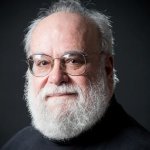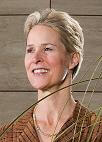Pings Lecture Series
About
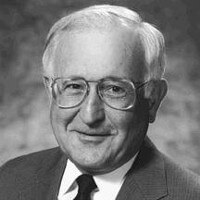
The Mork Family Department of Chemical Engineering and Materials Science has announced a second keynote lecture series and named it for the late Cornelius J. Pings, a prominent chemical engineer and a renowned academic administrator.
Neal Pings served with distinction as provost at both Caltech, his alma mater, and at USC, where he held the chief academic officer position from 1981 to 1993, a period when the university achieved great gains in stature. He left USC to become president of the Association of American Universities (AAU), the Washington, D.C.-based representative of the nation’s top 60 research universities, and served there until 1998.
Pings was awarded the Presidential Medallion, USC’s highest honor, and Caltech’s Distinguished Alumnus Award. He was a member of the National Academy of Engineering and the American Academy of Arts and Sciences.
2024 Speaker
Yury Gogotsi
Distinguished University Professor and Charles T. and Ruth M. Bach Endowed Chair in the Department of Materials Science and Engineering
Drexel University
"2D Carbides and Nitrides (MXenes) -“ from Discovery to Applications"
Abstract
MXenes are a family of two-dimensional (2D) early transition metal carbides, nitrides, oxycarbides, carbonitrides, and related structures with a general formula of Mn+1XnTx, where M is a transition metal, X is carbon or nitrogen (oxygen substitution is possible), T represents the surface terminations (O, OH, halogen, chalcogen, etc.), and n = 1—4 [1]. More than 50 MXene compositions have already been reported, but the number of possible compositions is infinite if one considers solid solutions and combinations of surface terminations. MXenes open an era of computationally driven atomistic design of 2D materials. MXenes possess electronic, optical, mechanical, and electrochemical properties that differentiate them from other materials. Chemically tunable superconductivity has been demonstrated in Nb- and Mo-based MXenes. Chemically tunable ferromagnetism and antiferromagnetism have been predicted. Highly nonlinear optical properties of MXenes are being explored. Several MXenes have been predicted to act as topological insulators. Many MXenes are metals but with a tunable density of states at the Fermi level, like semiconductors. Moreover, their properties are tunable by design and can be modulated using an ionotronic approach [2], leading to breakthroughs in the fields ranging from optoelectronics, electromagnetic interference shielding, and communication to energy storage, catalysis, sensing, and healthcare. In several applications, such as electromagnetic interference shielding, MXenes have already outperformed all other materials. In this talk, I’ll discuss the synthesis and structure of MXenes, their optoelectronic properties, and the coupling between electrochemical redox processes in MXenes and their optical properties, which can be monitored in situ using spectroelectrochemistry techniques [3].
Time and Location
Tue, Feb 13, 2024
4:00 PM - 5:20 PM
ZHS 252
Yury Gogotsi is a Distinguished University Professor and Charles T. and Ruth M. Bach Endowed Chair in the Department of Materials Science and Engineering at Drexel University (Philadelphia, USA). He is the founding Director of the A.J. Drexel Nanomaterials Institute. He received his MS (1984) and PhD (1986) from Kyiv Polytechnic and a DSc degree from the National Academy of Sciences of Ukraine in 1995. Together with his students and colleagues, he made principal contributions to the development of materials for electrochemical capacitors and other energy storage devices, discovered MXenes, demonstrated the tuning of structure and porosity of carbide-derived carbons, and developed new processes for the synthesis, surface modification, and purification of nanotubes and nanodiamonds. He also published the first microscopic observation of water inside carbon nanotubes, discovered polygonal nanotubes (graphite polyhedral crystals), and shaped the field of high-pressure surface science. He is recognized as a Highly Cited Researcher in Materials Science and Chemistry and a Citations Laureate by Clarivate Analytics (Web of Science). He has received numerous awards for his research, including the Ceramic Prize from the World Academy of Ceramics, the Materials Research Society (MRS) Medal, the American Chemical Society (ACS) Award in the Chemistry of Materials, etc. He has been elected a Fellow of the National Academy of Inventors, the World Academy of Ceramics, the European Academy of Sciences, and many professional societies. He holds honorary doctorates from several European Universities.
Tue, Feb 13, 2024
4:00 PM - 5:20 PM
ZHS 252
Yury Gogotsi is a Distinguished University Professor and Charles T. and Ruth M. Bach Endowed Chair in the Department of Materials Science and Engineering at Drexel University (Philadelphia, USA). He is the founding Director of the A.J. Drexel Nanomaterials Institute. He received his MS (1984) and PhD (1986) from Kyiv Polytechnic and a DSc degree from the National Academy of Sciences of Ukraine in 1995. Together with his students and colleagues, he made principal contributions to the development of materials for electrochemical capacitors and other energy storage devices, discovered MXenes, demonstrated the tuning of structure and porosity of carbide-derived carbons, and developed new processes for the synthesis, surface modification, and purification of nanotubes and nanodiamonds. He also published the first microscopic observation of water inside carbon nanotubes, discovered polygonal nanotubes (graphite polyhedral crystals), and shaped the field of high-pressure surface science. He is recognized as a Highly Cited Researcher in Materials Science and Chemistry and a Citations Laureate by Clarivate Analytics (Web of Science). He has received numerous awards for his research, including the Ceramic Prize from the World Academy of Ceramics, the Materials Research Society (MRS) Medal, the American Chemical Society (ACS) Award in the Chemistry of Materials, etc. He has been elected a Fellow of the National Academy of Inventors, the World Academy of Ceramics, the European Academy of Sciences, and many professional societies. He holds honorary doctorates from several European Universities.
2015 Speaker
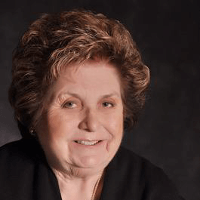
Professor Mary F. Wheeler
Director, Center for Subsurface Modeling
Institute for Computational Engineering and Sciences
The University of Texas at Austin
"Fluid- filled Fracture Propagation Using Phase Field”
Abstract
In this presentation, we discuss current research on fluid-filled fracture propagation using a phase-field diffusive zone algorithm and coupling to a reservoir simulator. Phase field modeling has been used for the past decade in modeling fractures in an elastic medium. Recently in collaboration with Andro Mikelic and Thomas Wick we extended this method to pressurized fractures in a poroelastic medium. This thermodynamically consistent approach captures several characteristic features of crack propagation such as joining, branching and non-planar propagation in heterogeneous porous media as well as fracture width evolution and fracture-length propagation. Here we also describe a technique for coupling phase-field to a fractured poroelastic reservoir simulator. We present two and three-dimensional numerical tests to benchmark, compare and demonstrate the predictive capabilities of the fracture propagation model as well as the proposed coupling scheme.
Time and Location
January 21, 2015
Time: 11:15 A.M.
Doheny Library Room DML 240
A reception will follow in DML 240 Breezeway
Mary Fanett Wheeler was born in 1938 in Cuero, Texas, near San Antonio. She had always been interested in mathematics and took a course in it 'just for fun'. She ended up with enough courses to graduate in mathematics as well." Mary Wheeler earned a double major in social sciences and mathematics in 1960 at the University of Texas. She received an M.A. from the University of Texas in 1963, and her Ph.D. (1971) from Rice University (when her daughter was 3 years old.) Her Ph.D. thesis was on "A Priori L2 Error Estimates for Galerkin Approximations to Parabolic Partial Differential Equations". She began teaching at Rice University in 1971, rising through the ranks until in 1988 she was appointed as Noah Harding Professor of Computational and Applied Mathematics (first woman to hold such a position at Rice.)
Since 1995 she has held the Ernest and Virginia Cockrell Chair in Engineering in the Department of Mathematics at the University of Texas in Austin. She works on numerical solutions of partial differential equations, parallel computation, and modeling flow in porous media. She has written over 200 research papers and technical reports, and authored 7 books.
2014 Speaker
 Professor Kristi S. Anseth
Professor Kristi S. Anseth
Department of Chemical Biological Engineering
University of Colorado (Boulder, CO)
"Engineering hydrogels as synthetic extracellular
matrices for cell culture and tissue regeneration"
Abstract
Methods for culturing mammalian cells in a biologically relevant context are increasingly needed to study cell and tissue physiology, expand and differentiate progenitor cells, and to grow replacement tissues for regenerative medicine. Two dimensional culture has been the paradigm for in vitro cell culture; however, evidence and intuition suggest that cells behave differently when they are isolated from the complex architecture of their native tissues and constrained to petri dishes or material surfaces with unnaturally high stiffness, polarity, and surface to volume ratio. As a result, biologists are often faced with the need for a more physiologically relevant 3D culture environment, and many researchers are realizing the advantages of hydrogels as a means of creating custom 3D microenvironments with highly controlled chemical, biological and physical cues. Further, the native extracellular matrix (ECM) is far from static, so ECM mimics must also be dynamic to direct complex cellular behavior. In general, there is an un-met need for materials that allow user-defined control over the spatio-temporal presentation of important signals, such as integrin-binding ligands, growth factor release, and biomechanical signals. Developing such hydrogel mimics of the ECM for 3D cell culture is an archetypal engineering problem, requiring control of numerous properties on multiple time and length scales important for cellular functions. New materials systems have the potential to significantly improve our understanding of how cells receive information from their microenvironment and the role that these dynamic processes may play in controlling the stem cell niche to cancer metastasis. This talk will illustrate our recent efforts to advance hydrogel chemistries for 3D cell culture and dynamically control biochemical and biophysical properties through orthogonal, photochemical reaction mechanisms.
Time and Location
Thursday, February 13, 2014
Seminar at 2:00 p.m.
Doheny Library Room, DM 240 (Lecture Hall)
A reception will follow.
KRISTI S. ANSETH is a Howard Hughes Medical Institute Investigator and Distinguished Professor of Chemical and Biological Engineering at the University of Colorado at Boulder. Dr. Anseth came to CU after earning her B.S. degree from Purdue University in 1992 and her Ph.D. degree from the University of Colorado in 1994 and completing post-doctoral research at MIT as an NIH fellow. Her research interests lie at the interface between biology and engineering where she designs new biomaterials for applications in drug delivery and regenerative medicine. Dr. Anseth’s research group has published over 250 publications in peer-reviewed journals and presented over 200 invited lectures in the fields of biomaterials and tissue engineering. She was the first engineer to be named a Howard Hughes Medical Institute Investigator and received the Alan T. Waterman Award, the highest award of the National Science Foundation for demonstrated exceptional individual achievement in scientific or engineering research. Dr. Anseth is an elected member of the National Academy of Engineering (2009), the Institute of Medicine (2009), and the National Academy of Sciences (2013). She is also a dedicated teacher, who has received four University Awards related to her teaching, as well as the American Society for Engineering Education’s Curtis W. McGraw Award. Dr. Anseth is a Fellow of the American Association for the Advancement of Science, the American Institute for Medical and Biological Engineering, and the Materials Research Society. She serves on the editorial boards or as associate editor of Biomacromolecules, Journal of Biomedical Materials Research — Part A, Acta Biomaterialia, Progress in Materials Science, and Biotechnology & Bioengineering.
2013 Speaker

Professor Frank S. Bates
Department of Chemical Engineering and Materials Science
University of Minnesota (Minneapolis)
"Block Copolymers – Designer Soft Materials"
Abstract
Soft materials constitute a familiar class of condensed matter. Representative examples include all types of polymers, colloidal dispersions, foams, and biological tissue such as collagen and spider silk. Block copolymers are a versatile form of macromolecules that provide unparalleled material design opportunities through the coupling of distinct polymer blocks that incorporate different physical properties. Modern synthetic chemical methods afford access to an unlimited number of architectural variations that begin with simple diblocks and progress through a dizzying array of graft and branched geometries. This lecture will focus on relatively simple molecular designs – linear macromolecules that contain two or three different block types strategically sequenced to create useful multiblock molecular architectures. A rich array of nanostructured phases resulting in tailored rheological and mechanical properties have been achieved in these materials. Block copolymers present unique characterization challenges while offering a plethora of technical applications. Examples that illustrate the synergistic use of self-consistent field theory along with transmission electron microscopy, small-angle x-ray and neutron scattering, dynamic mechanical spectroscopy and tensile testing will be discussed in the context of research that has led to commercial products.
Time and Location
December 11, 2012, 2pm
Gerontology Auditorium
A reception will follow in the Gerontology Patio
Frank S. Bates is a Regents Professor and Head of Chemical Engineering and Materials Science at the University of Minnesota. He received a B.S. in Mathematics from SUNY Albany in 1976, and M.S. and Sc.D. degrees in Chemical Engineering from MIT in 1979 and 1982. Between 1982 and 1989 Bates was a member of the technical staff at AT&T Bell Laboratories then joined the University of Minnesota as an Associate Professor. He was promoted to Professor in 1991, named a Distinguished McKnight University Professor in 1996, appointed Department Head in 1999, and became a Regents Professor in 2007. Professor Bates conducts research on a range of topics related to polymers, with a particular focus on the thermodynamics and dynamics of block copolymers and blends. In 1988 Bates was named a Distinguished Member of the Technical Staff at Bell Labs, in 1989 he received the John H. Dillon Medal and in 1997 the Polymer Physics Prize, both from the American Physical Society where he is a Fellow. He won the 2004 David Turnbull Lectureship Award from the Materials Research Society, shared the ACS Cooperative Research Award in 2008, was awarded the 2008 Sustained Research Prize by the Neutron Scattering Society of America and he is the 2012 Institute Lecturer of the AIChE. Bates was elected to the US National Academy of Engineering in 2002. In 2005 he was named a fellow of the American Association for the Advancement of Science and in 2010 was elected to the American Academy of Arts and Science.
2011 Speaker
Professor Chryssostomos Chryssostomidis
The Role of Autonomous Underwater Vehicles (AUVs) in Future Deepwater Oil Exploration and Production
Professor of Mechanical and Ocean Engineering
Massachusetts Institute of Technology (MIT)
Lecture Information:
Tuesday, March 22, 2011, 3:00pm
Research Summary
The oil industry has moved into deeper and deeper waters to meet the continued high demand for oil. The move into deeper waters has required major innovations to keep the cost low without sacrificing safety. The first innovation, the use of ROVs (Remotely Operated Vehicles), has made possible subsea completions at ever increasing standoff distances from the producing platform. The use of ROVs keeps the associated cost of the producing platform reasonable but increases the cost of inspection and maintenance. Even the most routine inspection using an ROV requires the presence of large surface vessel to support the ROV increasing the daily cost of even the most routine maintenance operations by tens of thousands of dollars. This cost pressure has ushered in the second innovation namely the use of AUVs, which can be operated without a costly surface vessel, to meet the inspection needs of producing platforms.
Whether ROVs will be entirely replaced by AUVs is debatable, but we believe that in the next decade an increasing number of light maintenance tasks will be assigned to AUVs. During the lecture the genesis and evolution of modern AUV technology will be discussed. Associated technologies such as underwater communications, sensor technologies, and near real-time supervisory control will be presented. The design of a fully operational and integrated AUV offshore oil inspection system will be described and discussed.
Biography
Educated at MIT and at the University of Newcastle-upon-Tyne in naval architecture, Professor Chryssostomidis was appointed to the MIT faculty in 1970 and became a full professor in the Department of Ocean Engineering in 1982. That same year he was appointed director of the MIT Sea Grant College Program where in 1989 he established the MIT Sea Grant Autonomous Underwater Vehicles (AUV) Laboratory to develop technology and systems for advanced autonomous surface and underwater vehicles. He served as Department Head of the department of Ocean Engineering where he established the Ocean Engineering Teaching Laboratory from 1994 to 2002. He has been director of the MIT Ocean Engineering Department Design Laboratory since its inception in the early 1970s. In 2003, with MIT Sea Grant staff, he created the Sea Perch Program, funded by the Office of Naval Research. The Sea Perch program trains educators across the United States and around the world to build a simple, remotely operated underwater vehicle, or ROV, made from PVC pipe and other inexpensive, easily available materials.
In 1994 he was elected as Fellow of the Society of Naval Architects and Marine Engineering. His over 100 publications display his wide range of interests including design methodology for ships, vortex-induced response of flexible cylinders, underwater vehicle design, design issues in advanced shipbuilding including the all electric ship and T-Craft. He receives research support from the Office of Naval Research, the National Science Foundation, the Naval Sea Systems Command, and the National Oceanic and Atmospheric Administration, in addition to industry support. Professor Chryssostomidis has served on several National Research Council advisory committees focusing on shipbuilding and marine issues.
2009 Speaker
Frances H. Arnold
How Enzymes Adapt: Lessons from Artificial Selection of a Cytochrome P450 Oxygenase
Dick and Barbara Dickinson Professor of Chemical Engineering and Biochemistry
California Institute of Technology
Lecture Information:
Tuesday, December 8, 2009, 3:00pm
Research Summary
When making his case for the key role of natural selection in evolution, Darwin pointed to the enormous phenotypic variation that could be achieved in relatively few generations of artificial selection. Today,artificial selection (or ‘directed evolution’) applied to proteins allows us to observe how readily the functional molecules of life adapt in the face of defined selection pressures. Circumventing our profound ignorance of how sequence encodes function, directed evolution is a powerful approach to generating useful new biological molecules. Here I will describe our efforts to evolve a cytochrome P450 enzyme (CYP102A1 from Bacillus megaterium). Properties such as catalytic activity or stability can frequently be enhanced by single amino acid substitutions, and accumulating relatively few beneficial mutations (as little as 1-2% of the sequence) can make very significant changes to enzyme function. I will show how a P450 fatty acid hydroxylase has been converted into a whole family of catalysts for oxidation of small alkanes to carbohydrate synthesis and drug lead diversification. Where natural evolution has gone (e.g. impressive diversification of function in the P450 enzyme superfamily), directed evolution can follow. Even more interesting are the catalysts nature may not care about, but chemists dream of. While yielding useful biocatalysts for chemical synthesis, these studies provide new insights into the mechanisms underlying evolution of natural enzymes.
2012 Speaker
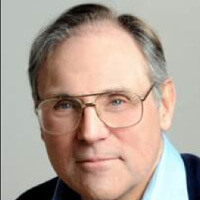 Professor Alexis Bell
Professor Alexis Bell
The Dow Professor of Sustainable Chemistry
UC Berkeley
Dept. of Chemical Engineering
Lecture Information:
Tuesday, April 24, 2012, 12:30pm - 1:50pm
Research Summary
Professor Bell's research focuses on understanding the fundamental relationships between the structure and composition of heterogeneous catalysts and their performance. He studies reaction mechanisms to identify factors limiting the activity and selectivity of catalysts. Reaction systems being investigated by his group include the synthesis of oxygenated compounds from COx (x = 1, 2), the conversion of alkanes to olefins and oxygenated products under oxidizing conditions, and the reduction of nitric oxide under oxidizing conditions. The objectives of his program are pursued through a combination of experimental and theoretical methods. Spectroscopic techniques, including IR, Raman, NMR, UV-Visible, and EXAFS, are used to characterize catalyst structure and adsorbed species under actual conditions of catalysis. Isotopic tracers and temperature-programmed desorption and reaction techniques are used to elucidate the pathways via which catalyzed reactions occur. Quantum chemical calculations are conducted to define the structure and energetics of adsorbed species and the pathways by which such species are transformed. The combined use of theory and experimental methods enables the attainment of a deeper understanding of the core issues of interest than can be achieved by the use of either approach alone.
Biography
Professor; Faculty Senior Scientist, LBNL; B.S., Massachusetts Institute of Technology (1964) Sc.D., Massachusetts Institute of Technology (1967). Curtis W. McGraw Award for Research, American Association of Engineering Education; the Professional Progress and R. H. Wilhelm Awards, the American Institute of Chemical Engineers; Paul H. Emmett Award in Fundamental Catalysis, Catalysis Society; National Academy of Engineering (1987) Fellow of the American Association for the Advancement of Science (1988), the ACS Award for Creative Research in Homogeneous or Heterogeneous Catalysis, American Chemical Society (2001); Honorary Professor, Siberian Branch of the Russian Academy of Sciences (2001), William H. Walker Award of the AIChE (2005), Elected to the American Academy of Arts and Sciences (2007).
Published on March 29th, 2017
Last updated on February 13th, 2024


